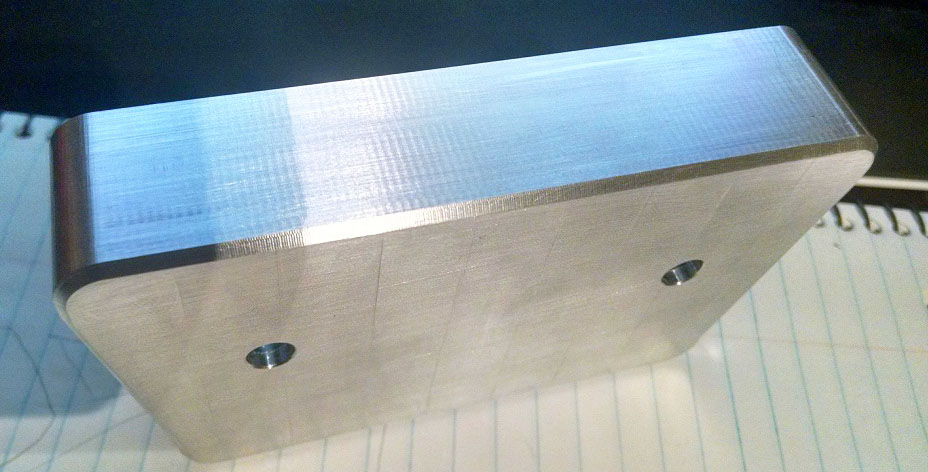The surface quality of mechanical parts plays a very important role in the overall quality of the parts. Surface ripple refers to a wavy texture that appears on the surface of the parts, usually caused by some factors during the machining process, and is also one of the important factors affecting the surface quality of the parts. Therefore, we will introduce the causes, effects, and improvement measures of surface ripples in precision machined parts.
The causes of ripples on the surface of workpieces
Insufficient stiffness of the machine:
Machine need to withstand a large amount of cutting force during processing. If the stiffness of the machine is not enough, it will cause the vibration of the machine to intensify, leading to the appearance of ripples on the surface of the workpiece. This phenomenon is particularly evident when processing thin-walled parts and long and thin rods.
Uneven clamping force:
Clamping is an essential part of mechanical processing, and uneven clamping force can easily lead to ripples on the surface of the workpiece. Excessive or uneven clamping force can generate bending stress, resulting in ripples during processing.
Excessive tool wear:
The degree of tool wear has a significant impact on the machining results. If the tool wears excessively, it can lead to an increase in cutting force and even unstable cutting, resulting in ripples on the surface of the workpiece.
Improper cutting conditions:
Improper cutting conditions are also an important reason for the appearance of ripples on the surface of the workpiece. For example, if the cutting speed is too fast or the feed rate is too large, it can easily lead to serious cutting vibration, which in turn can cause ripples on the surface of the workpiece.
Scratches on the machined surface:
If there are scratches or other defects on the surface of the workpiece, ripples are likely to appear during processing. Therefore, before processing, the workpiece should be cleaned and inspected to ensure the flatness of the machining surface.
Process issues:
Uneven wear of the cutting edge, excessive cutting force, and fast feed rate can all cause ripples on the surface of the workpiece.
Equipment issues:
Insufficient rigidity of the machine tool, damage to the spindle bearings, insufficient tool clamping force, unstable tool speed, and other factors may also cause surface ripples on the workpiece.
Material issue:
If the hardness of the processed material is uneven, internal stress is too high, and other factors can cause ripples on the surface of the workpiece.

The Effect of Surface Ripples on Parts
Impact the appearance quality of the parts.
The ripples on the surface of the parts can make their appearance appear uneven, affecting the overall aesthetics. Especially in some high demand products, such as automotive parts, precision instruments, etc., surface ripples can be considered defects, reducing the market competitiveness of the product.
Impact on the functional performance of the parts.
Ripples can reduce the contact area of the part surface, thereby reducing its load-bearing capacity and conductivity. In some parts that require close contact, such as seals, valves, bearings, etc., surface ripples can cause problems such as air leakage, liquid leakage, increased friction, and affect their normal operation.
Impact on the corrosion resistance and wear resistance of the parts.
Ripples can increase the number of grooves on the surface of parts, thereby increasing the erosion area of corrosive media and reducing the corrosion resistance of parts. At the same time, ripples can also cause uneven contact pressure on the surface of the parts, leading to uneven wear and reducing the wear resistance of the parts.
How to improve the processing ripple degree
(1) Reduce or eliminate vibrations in the process system:
The vibration of the process system is the main cause of ripple, so efforts should be made to reduce or eliminate the vibration.
(2) Change cutting amount:
In grinding, the corrugation can be reduced by increasing the speed of the grinding wheel without affecting the vibration of the process system.
(3) Correct selection of grinding wheel and improvement of workpiece hardness:
The type of grinding wheel abrasive has an impact on the waviness of the grinding process. If the waviness does not meet the requirements, different grades of grinding wheels can be replaced.
(4) Trim the grinding wheel and use cooling lubricant.
Conclusion
In precision machining of parts, the influence of surface ripples on the parts is multifaceted, including appearance quality, functional performance, corrosion resistance, and wear resistance. To ensure the quality and performance of the parts, we need to take corresponding measures to avoid or reduce the occurrence of surface ripples.



